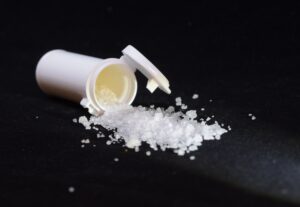Methamphetamine, or meth, is a powerful stimulant that produces feelings of euphoria and increased energy. When these effects wear off, users crave the intense high and reach for more. The problem is, meth tolerance builds up quickly, meaning users need increasingly larger doses to feel the same rush. This cycle leads to addiction and dependence, sometimes after just one use.
Breaking this cycle is tough. While some try to detox at home, the withdrawal symptoms are often intense, leading many to relapse or seek relief with other substances. That’s why it’s best to detox in a professional facility.
Keep reading to find out what happens during meth detox.
Get help quitting meth. Contact La Fuente Hollywood Treatment Center at 888.903.9898.
What Is Meth Detox?
Meth detox is a natural process where the body eliminates the drug and returns to a healthy state. During this time, managing the withdrawal symptoms is the focus.
The duration of a meth detox varies depending on factors such as metabolism, frequency of use, and any underlying health issues. Typically, the acute phase, which is characterized by intense withdrawal symptoms, lasts one to two weeks. However, lingering symptoms and cravings may persist for weeks or months afterward.
While some people try to detox at home, it’s often challenging. Home environments can be triggering, especially if they’re associated with drug use. Moreover, meth withdrawal can bring about severe physical and emotional symptoms that are tough to handle without medical assistance.
Detoxing at home is not recommended, especially for those with co-occurring mental health conditions or a dual diagnosis.
What Happens During Meth Detox?
The meth detox process is usually broken down into three stages: evaluation, stabilization, and ongoing treatment.
Evaluation
A medical team conducts a health assessment when a patient is admitted for a meth detox. This includes measuring vital signs and conducting blood and urine tests to see how much meth is in the patient’s system and how their body is reacting.
In addition to the physical exams, someone from the medical team will interview the patient about their substance use and mental health. This helps the team get a picture of the patient’s condition and tailor a detox plan to their specific needs.
Stabilization
Many patients are either intoxicated or experiencing severe withdrawal symptoms when they arrive at the treatment center. Therefore, they receive immediate medical attention following the evaluation.
Initially, this involves focusing on rest, hydration, and nourishment to replenish vital nutrients. The medical team adjusts these protocols as the patient’s condition improves.
Patients may also be prescribed medications to stabilize their condition. While there are currently no FDA-approved medications specifically for meth detox, some can help alleviate withdrawal symptoms.
For example, bupropion, an antidepressant, has been found effective in reducing drug cravings. Another antidepressant, fluoxetine, can help manage panic attacks and other anxiety symptoms. Additionally, modafinil, a stimulant used to treat narcolepsy, has been shown to mitigate symptoms like fatigue.
Ongoing Treatment
Following the initial detoxification process, the medical team works with the patient to create a long-term treatment plan. This plan is highly personalized, taking factors like the severity of the addiction, the patient’s lifestyle, and insurance coverage into account.
Typically, patients begin by enrolling in either a residential treatment program or a partial hospitalization program (PHP).
Residential treatment programs offer the highest level of care, featuring round-the-clock supervision from medical professionals and licensed addiction therapists. They’re ideal for patients with severe addiction or a high risk of relapse. During their stay, which usually lasts 30 to 90 days, patients participate in clinical therapy, attend 12-step meetings, engage in fitness activities, and receive life-skills training.
Partial hospitalization programs offer similar benefits but with a lower level of intensity. Patients attend treatment five to six hours per day, five days a week. Programming includes group and individual therapy, life-skills training, and complementary therapies like yoga and meditation.
Once patients complete their initial treatment, they usually transition to a less intensive program. For instance, those in residential treatment may move to PHP, while individuals starting with PHP might shift to an intensive outpatient program (IOP).
LGBTQ Meth Detox at La Fuente Hollywood
Meth has been a significant issue in the LGBTQ community since the late 1990s, particularly among men who have sex with men (MSM). According to The National Survey on Drug Use and Health, past-year meth use was four times higher among gay men compared to straight men.
Beyond its physical effects, meth use is closely linked to risky sexual behavior in MSM, contributing significantly to HIV transmission within this group.
Understanding the serious health impact of meth in our community, La Fuente is dedicated to providing specialized LGBTQ-centric meth detox and treatment at our Los Angeles facility.
In addition to on-site detox services, we offer various long-term treatment options, including residential care, partial hospitalization programs (PHP), and intensive outpatient programs (IOP).
Need help detoxing from meth? Call La Fuente today at 888.903.9898.




